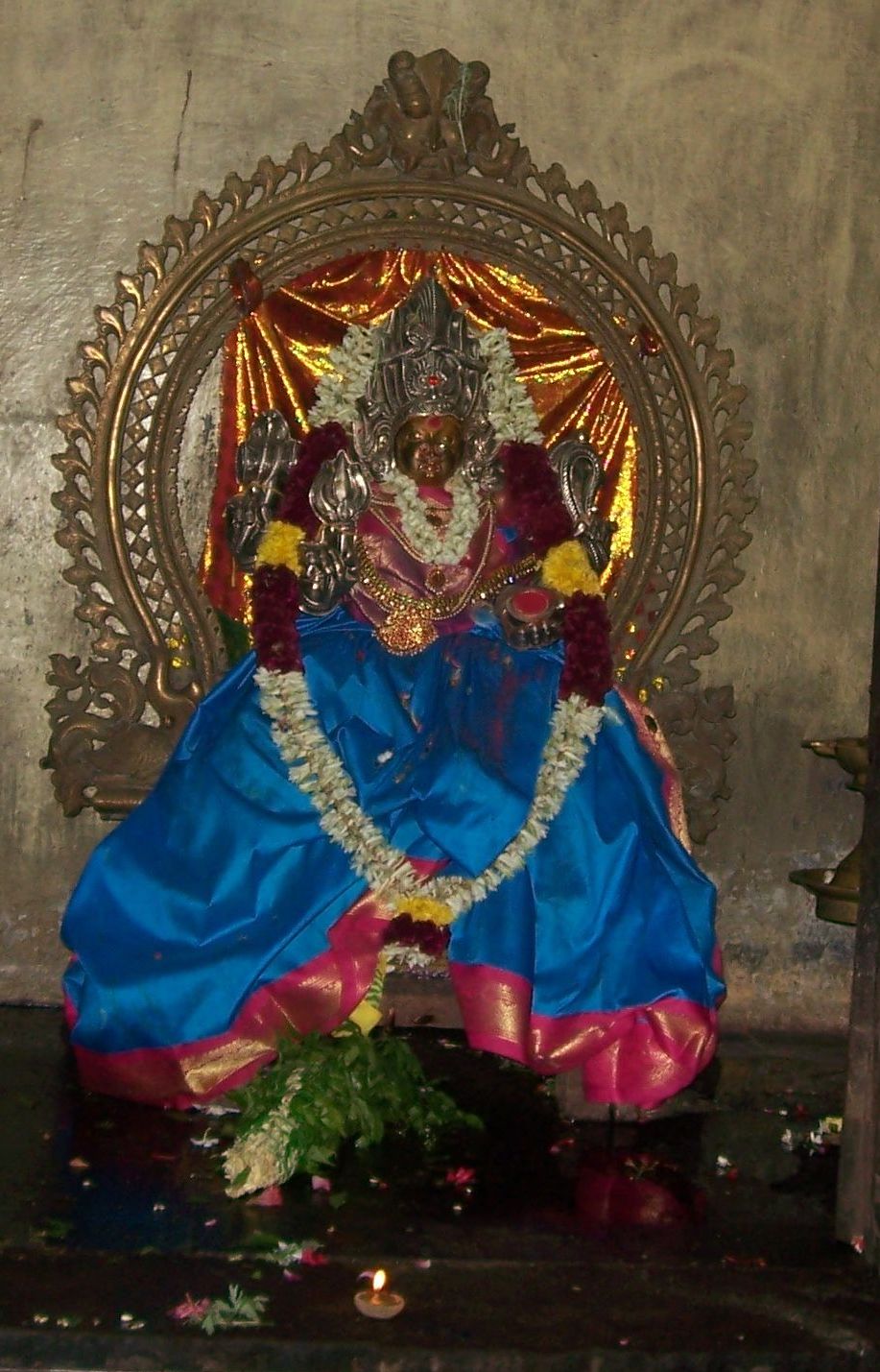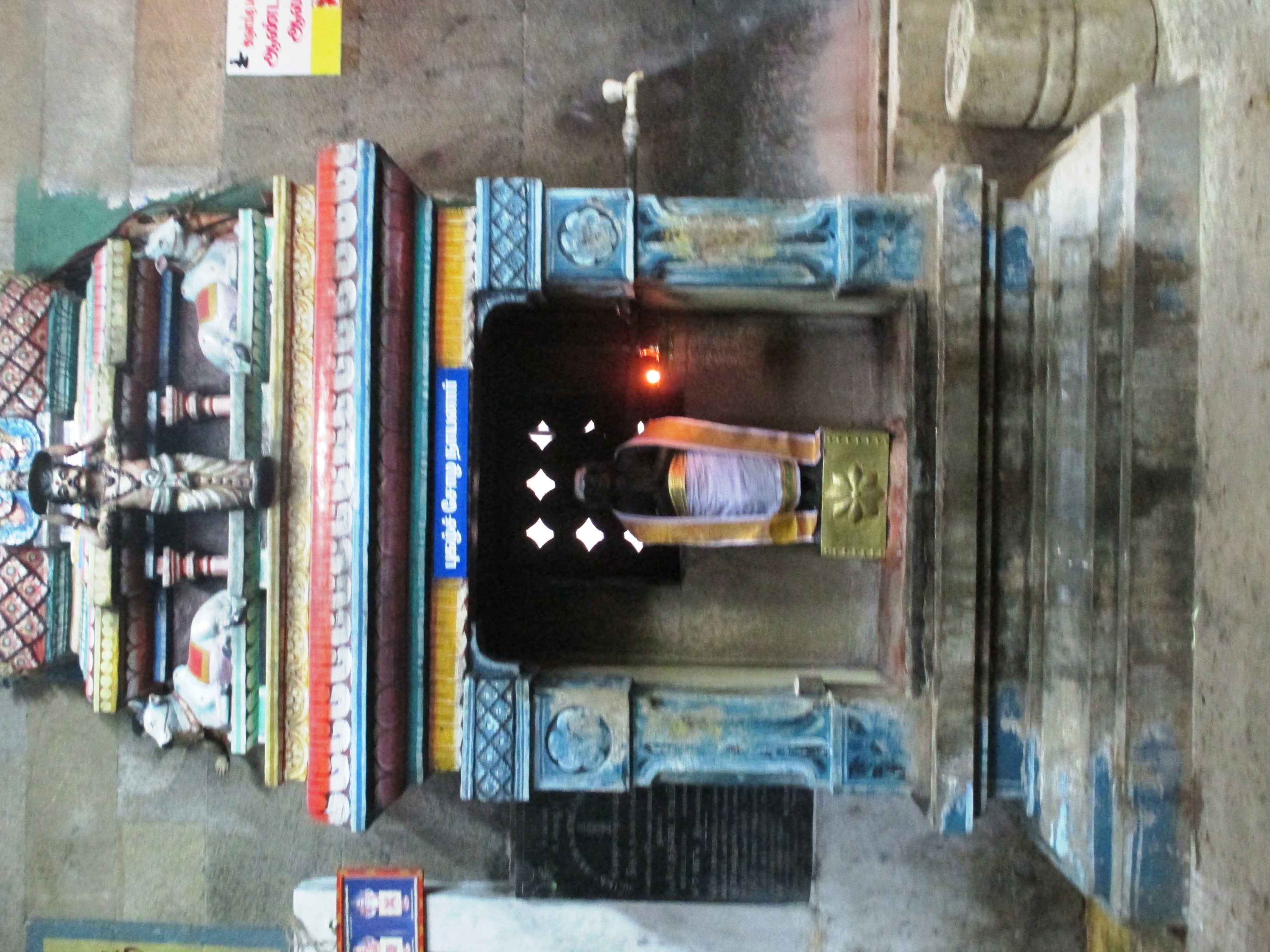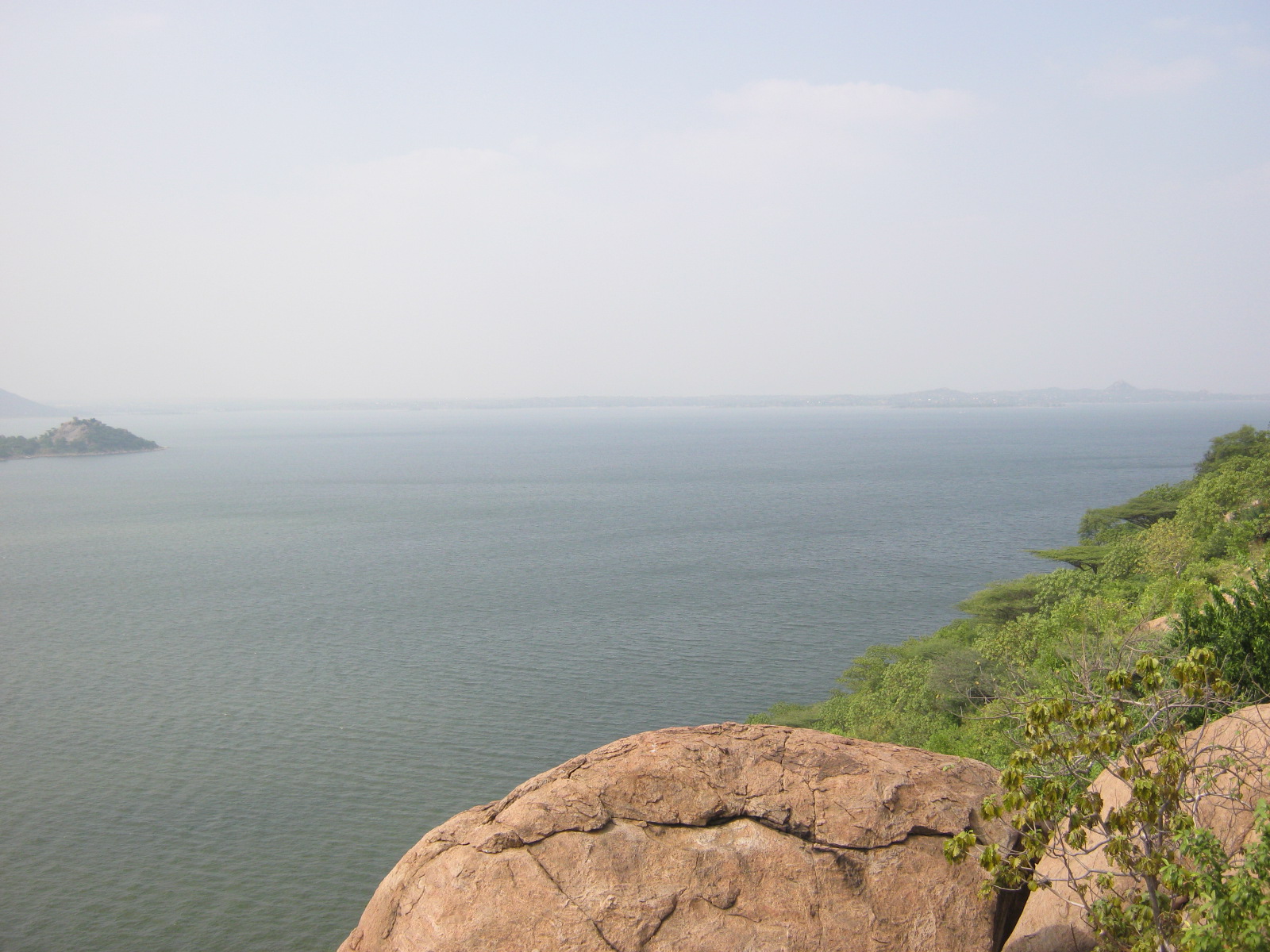|
Woraiyur
Uraiyur (also spelt Woraiyur) is a posh locality in Tiruchirapalli city in Tamil Nadu, India. Uraiyur was the ancient name of Tiruchirappalli City. Now, it became the one of the busiest area in Trichy City. It was the capital of the early Cholas, who were one of the three main kingdoms of the ancient Tamil country. Sometimes spelt as ''Urayur'', this location is also known as ''Thirukkozhi'', ''Nikalaapuri'', ''Uranthai'', and ''Kozhiyur'' or ''Koliyur''. It has a history dating back to before 300 BCE There is definite mention of the Cholas, and their capital in Ashokan inscriptions in Orissa pushing back the antiquity of the Cholas as well as Uraiyur to 272–232 BCE, which was the period of Ashoka (ca. 304–232 BCE) who was ruler of the Maurya Dynasty of Pataliputra (modern Patna). Inscriptions and rock edicts of Ashoka and the Satavahanas describe Urayur as "the citadel and centre of the Cholas". Uraiyur was ruled by Karikala Cholan. A revered Digambar Jain Acharya, Saman ... [...More Info...] [...Related Items...] OR: [Wikipedia] [Google] [Baidu] |
Vekkali Amman Temple
Vekkali Amman Temple is a temple dedicated to the Goddess ''Vekkaali'', a form of the goddess Kali. It is located in Woraiyur, a neighbourhood in Tiruchirappalli, Tamil Nadu, India. The central shrine of the temple houses the image of Vekkali Amman and the major feature of the temple is the absence of roof over the sanctum. The temple is known from the period of early Cholas, but there are no historical records. The people of Woraiyur see Vekkali Amman as their guardian deity. The temple has six daily rituals in its calendar and celebrates six annual festivals. The temple chariot is made of gold and was launched during 2010. The temple is maintained and administered by the Hindu Religious and Endowment Board of the Government of Tamil Nadu. Religious significance The roof over the sanctum was constructed during different times, but is believed to be burnt by the power of Vekkali Amman. The position of the leg of Vekkali Amman is different from other Shakti temples without roof wh ... [...More Info...] [...Related Items...] OR: [Wikipedia] [Google] [Baidu] |
Panchavarnaswamy Temple
Panchavarnaswamy Temple (An ancient Tamil temple)(பஞ்சவர்ணஸ்வாமி கோயில்) :ta:உறையூர் பஞ்சவர்ணேசுவரர் கோயில் (usually Panjavarnaswamy Temple) is a Tamil temple dedicated to Shiva, located in Woraiyur, a neighborhood in the town of Tiruchirapalli in Tamil Nadu, India. Shiva is believed to portray five different colours, giving the name of the presiding deity, Panchavarnaswamy. Panchavarnaswamy is revered in the 7th century Tamil Saiva canonical work, the ''Tevaram'', written by Tamil saint poets known as the tri-nayanars (Sambandar, Thirunavukkarasar, Sundar) (சம்பந்தர், திருநாவுக்கரசர், சுந்தரர், and classified as ''Paadal Petra Sthalam''. It has several inscriptions dating back to the Chola period. The temple has six daily rituals at various times from 5:30 a.m. to 8 p.m., and three yearly festivals on its calendar. T ... [...More Info...] [...Related Items...] OR: [Wikipedia] [Google] [Baidu] |
Samantabhadra (Jain Monk)
Samantabhadra was a Digambara acharya (head of the monastic order) who lived about the later part of the second century CE. He was a proponent of the Jaina doctrine of Anekantavada. The '' Ratnakaranda śrāvakācāra'' is the most popular work of Samantabhadra. Samantabhadra lived after Umaswami but before Pujyapada. Life Samantabhadra is said to have lived from 150 CE to 250 CE. He was from southern India during the time of Chola dynasty. He was a poet, logician, eulogist and an accomplished linguist. He is credited with spreading Jainism in southern India. Samantabhadra, in his early stage of asceticism, was attacked with a disease known as ''bhasmaka'' (the condition of insatiable hunger). As, digambara monks don't eat more than once in a day, he endured great pain. Ultimately, he sought the permission of his preceptor to undertake the vow of Sallekhana. The preceptor denied the permission and asked him to leave monasticism and get the disease cured. After getting cure ... [...More Info...] [...Related Items...] OR: [Wikipedia] [Google] [Baidu] |
Sri Azhagiya Manavala Perumal Temple
Azhagiya Manavalan Perumal Temple (also called Thirukozhi or Nachiyar Koil) in Uraiyur, a suburb Tiruchirappalli in the South Indian state of Tamil Nadu, is dedicated to the Hindu god Vishnu. Constructed in the Dravidian style of architecture, the temple is glorified in the ''Divya Prabandha'', the early medieval Tamil canon of the Alvar saints from the 6th–9th centuries AD. It is one of the 108 ''Divyadesam'' dedicated to Vishnu, who is worshipped as Azhagiya Manavalan and his consort Lakshmi as Kamalavalli. The temple is believed to have been built by the Medieval Cholas of the late 8th century AD, with later contributions from later Pandyas, Vijayanagar kings and Madurai Nayaks. Azhagiya Manavalan is believed to have appeared to Kamalavalli, the daughter of Chola king Nanda Cholan, in this place to marry her. A granite wall surrounds the temple, enclosing all its shrines and bodies of water. The temple has a five-tiered ''rajagopuram'', the temple's gateway tower. Six ... [...More Info...] [...Related Items...] OR: [Wikipedia] [Google] [Baidu] |
Tanjavur
Thanjavur (), also Tanjore, Pletcher 2010, p. 195 is a city in the Indian state of Tamil Nadu. Thanjavur is the 11th biggest city in Tamil Nadu. Thanjavur is an important center of South Indian religion, art, and architecture. Most of the Great Living Chola Temples, which are UNESCO World Heritage Monuments, are located in and around Thanjavur. The foremost among these, the Brihadeeswara Temple, is located in the centre of the city. Thanjavur is also home to Tanjore painting, a painting style unique to the region. Thanjavur is the headquarters of the Thanjavur District. The city is an important agricultural centre located in the Kaveri Delta and is known as the ''Rice bowl of Tamil Nadu''. Thanjavur is administered by a municipal corporation covering an area of and had a population of 290,720 in 2011. Roadways are the major means of transportation, while the city also has rail connectivity. The nearest airport is Tiruchirapalli International Airport, located away from the ... [...More Info...] [...Related Items...] OR: [Wikipedia] [Google] [Baidu] |
Kaveri
The Kaveri (also known as Cauvery, the anglicized name) is one of the major Indian rivers flowing through the states of Karnataka and Tamil Nadu. The Kaveri river rises at Talakaveri in the Brahmagiri range in the Western Ghats, Kodagu district of the state of Karnataka, at an elevation of 1,341 m above mean sea level and flows for about 800 km before its outfall into the Bay of Bengal. It reaches the sea in Poompuhar in Mayiladuthurai district. It is the third largest river after Godavari and Krishna in southern India, and the largest in the State of Tamil Nadu, which, on its course, bisects the state into north and south. In ancient Tamil literature, the river was also called Ponni (the golden maid, in reference to the fine silt it deposits). The Kaveri is a sacred river to the people of South India and is worshipped as the Goddess Kaveriamma (Mother Cauvery). It is considered to be among the seven holy rivers of India. It is extensively used for agricultur ... [...More Info...] [...Related Items...] OR: [Wikipedia] [Google] [Baidu] |
Tamil Language
Tamil (; ' , ) is a Dravidian language natively spoken by the Tamil people of South Asia. Tamil is an official language of the Indian state of Tamil Nadu, the sovereign nations of Sri Lanka and Singapore, and the Indian territory of Puducherry (union territory), Puducherry. Tamil is also spoken by significant minorities in the four other South Indian states of Kerala, Karnataka, Andhra Pradesh and Telangana, and the Union Territory of the Andaman and Nicobar Islands. It is also spoken by the Tamil diaspora found in many countries, including Malaysian Tamil, Malaysia, Myanmar Tamils, Myanmar, Tamil South Africans, South Africa, British Tamils, United Kingdom, Tamil Americans, United States, Tamil Canadians, Canada, Tamil Australians, Australia and Tamil Mauritians, Mauritius. Tamil is also natively spoken by Sri Lankan Moors. One of 22 scheduled languages in the Constitution of India, Tamil was the first to be classified as a Languages of India, classical language of India ... [...More Info...] [...Related Items...] OR: [Wikipedia] [Google] [Baidu] |
South India
South India, also known as Dakshina Bharata or Peninsular India, consists of the peninsular southern part of India. It encompasses the States and union territories of India, Indian states of Andhra Pradesh, Karnataka, Kerala, Tamil Nadu, and Telangana, as well as the union territory, union territories of Lakshadweep and Puducherry (union territory), Puducherry, comprising 19.31% of India's area () and 20% of India's population. Covering the southern part of the peninsular Deccan Plateau, South India is bounded by the Bay of Bengal in the east, the Arabian Sea in the west and the Indian Ocean in the south. The geography of the region is diverse with two mountain ranges – the Western Ghats, Western and Eastern Ghats – bordering the plateau heartland. The Godavari River, Godavari, Krishna River, Krishna, Kaveri, Tungabhadra River, Tungabhadra, Periyar River, Periyar, Bharathappuzha, Pamba River, Pamba, Thamirabarani River, Thamirabarani, Palar River, Palar, and Vaigai River, Va ... [...More Info...] [...Related Items...] OR: [Wikipedia] [Google] [Baidu] |
Ancient Tamil Country
Tamiḻakam ( Tamil: தமிழகம்; Malayalam: തമിഴകം), refers to the geographical region inhabited by the ancient Tamil people, covering the southernmost region of the Indian subcontinent. Tamilakam covered today's Tamil Nadu, Kerala, Puducherry, Lakshadweep and southern parts of Andhra Pradesh and Karnataka. Traditional accounts and the '' Tolkāppiyam'' referred to these territories as a single cultural area, where Tamil was the natural language and permeated the culture of all its inhabitants. The ancient Tamil country was divided into kingdoms. The best known among them were the Cheras, Cholas, Pandyans and Pallavas. During the Sangam period, Tamil culture began to spread outside Tamilakam. Ancient Tamil settlements were also established in Sri Lanka (Sri Lankan Tamils) and the Maldives ( Giravarus). In contemporary India, Tamil politicians and orators often use the name ''Tamilakam'' to refer to Tamil Nadu alone. Etymology "Tamiḻ ... [...More Info...] [...Related Items...] OR: [Wikipedia] [Google] [Baidu] |
Pallavas
The Pallava dynasty existed from 275 CE to 897 CE, ruling a significant portion of the Deccan, also known as Tondaimandalam. The dynasty rose to prominence after the downfall of the Satavahana dynasty, with whom they had formerly served as feudatories. The Pallavas became a major South Indian power during the reign of Mahendravarman I (600–630 CE) and Narasimhavarman I (630–668 CE), and dominated the southern Andhra Region and the northern parts of the Tamil region for about 600 years, until the end of the 9th century. Throughout their reign, they remained in constant conflict with both the Chalukyas of Badami in the north, and the Tamil kingdoms of Chola and Pandyas in the south. The Pallavas were finally defeated by the Chola ruler Aditya I in the 9th century CE. The Pallavas are most noted for their patronage of Hindu temple architecture, the finest example being the Shore Temple, a UNESCO World Heritage Site in Mamallapuram. Kancheepuram served as the c ... [...More Info...] [...Related Items...] OR: [Wikipedia] [Google] [Baidu] |







